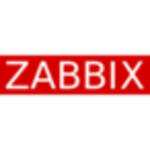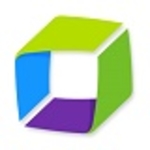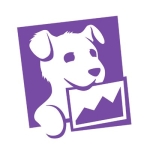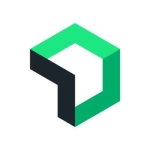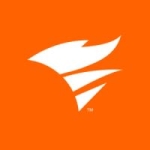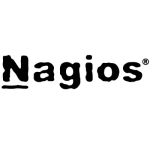What is our primary use case?
Sparx Solutions is a managed service provider. We primarily use the LogicMonitor platform for monitoring, maintenance, and management of our managed services and customers' infrastructure. In terms of management, it is more around monitoring and alerting. That is essentially the core component that we use it for. However, there are other features integrated into the platform that we get value out of.
We have baked LogicMonitor into our core services, in terms of MSP and managed service offerings. We use this tool to fundamentally provide network monitoring services to our customers. It is definitely a great tool and something that we use daily.
We have multiple users using these solutions. They are technicians and engineers. Essentially, they use this platform for different purposes. So, a support resource will be able to use it to identify alarms and when there is a new ticket that needs to be created to remediate a problem. Engineers may use this platform to obtain valuable insight into the systems that they are working on, e.g., if they would like to understand whether a device has a really high CPU before they plan a change, etc. There are different use cases for using the platform. One of the main use cases is having users use the platform to provide support services.
We deploy probes, which are hosted by us. These connect back to the LogicMonitor platform in the cloud.
How has it helped my organization?
In terms of alerting, there is already a prebuilt alert threshold for a lot of the metrics. It is quite smart out-of-the-box. You may even identify issues which were not visible to you before by just introducing monitoring from the LogicMonitor platform.
To a certain extent, there are mapping functionalities within the platform. A lot of these sorts of features, which are desired, come straight out-of-the-box. By being able to drop a Collector in the environment, you can quickly identify a lot of key information. Maybe some information, which you didn't previously have visibility to, becomes very visible. That sort of insight is very good information and allows us to be able to provide more value to our customers by having a better understanding out-of-the-box.
What is most valuable?
There are a multitude of features that we use. Obviously, with the core foundational features, which are monitoring, we use different sorts of data sources to monitor. For example, SNMP would be an example of syslog monitoring. Primarily, that is used for network devices in our use case. When we monitor network devices for our customers, it is all performed with the compute being within the LogicMonitor platform and architecture. The list goes on.
There are a multitude of different vendors, products, and hardware that it can perform monitoring on. It is not limited to that either. There is actually a vast range of different services that can be monitored, e.g., cloud services and services that use APIs. It is quite customizable and flexible in terms of monitoring capabilities. In addition to what is out-of-the-box, there are also capabilities to configure custom monitoring which can use many different data sources. From that perspective, it is quite broad in its scope of monitoring.
In terms of the services that we like to use, there is the built-in AIOps, which is quite a good service. It analyzes metrics of data over time and can identify anomalies based on AIs, sort of an intelligence in the back-end. This is a really good service. Some of the services can add on components to the platform, like cloud monitoring, so you can monitor your cloud environments, such as AWS, Azure, and Google Cloud Platform.
There are quite a vast amount of different features that you can use within the platform. Some of them are additional costs and some of them come out-of-the-box. Another example of something, which has recently been included in the core component, would be a service called LM Config. Essentially, this service allows us to collect network devices, run configuration files, and take backups of our customers' infrastructure centrally from one system. Rather than needing individual systems at every customer site, because this is a cloud delivered sort of architecture, we can take backups of our customers' infrastructure through the platform, which is a really great convenience and sort of efficient way of doing so. This is actually an automated process, so you can schedule it to occur as frequently as you would like.
LogicMonitor enables us to modernize legacy tooling and consolidate monitoring tools in our customers' stacks. It has a nice user interface. It is very straightforward in terms of usability and utility.
A single pane of glass is always preferred over distributed monitoring or other management platforms. In the past, you would need to have multiple different technologies performing different functions. For example, backups would usually be under another tool. Therefore, LogicMonitor was a great tool for us when we found that it had integrated backups using LM Config. That has reduced the time of being able to provide value to a customer. Being a single pane of glass, a lot of your metrics and alerts can all be grabbed from the tool. For a managed service provider, like us, it creates a lot more efficiencies within our operations. Our users only need to learn one tool, as opposed to learning multiple tools.
We believe that the dashboards are one of the most powerful functionalities within the LogicMonitor platform, as they are quite close to real-time, dynamic, and update quite frequently. Also, they give you a glimpse into the environment without having to run reports, etc. So, the dashboards are definitely a very powerful way of obtaining information and insights from any environment quickly. There are obviously environments where custom dashboards are required. However, a lot of time, the default dashboards provide enough information to get you going and give you that visibility instantly. Monitoring is overtime, but the earlier that you onboard and get the monitoring going, the faster the dashboard starts to populate with data. In that instance, you will be able to see data as it happens through the network or systems that you are monitoring.
Its templated dashboards are quite comprehensive out-of-the-box. For a lot of users out there, the out-of-the-box dashboards and monitoring will suffice. They are definitely comprehensive. Obviously, every environment is different, so you will need to tweak it where suitable. Overall, it's a pretty straightforward onboarding process. Assuming that you have all the right information required, if you want to monitor certain systems, then you may need passwords and configuration setup. Assuming that all these things are complete, then the onboarding process is pretty straightforward and streamlined.
One of LogicMonitor's benefits and strongest elements is that it is very extensible. It allows you to configure a lot of customizations, which are sometimes limited in other platforms. However, we found in our experience with LogicMonitor that it is quite extensible. The functionality is quite comprehensive in terms of customization. You can get very detailed into what you would like to monitor, whether it is using an out-of-the-box data source or a custom data source. You can then create custom dashboard elements so you can exhibit that data in a dashboard.
There have been some new features that have been released recently in the last few months, one of them being LM Logs. This feature uses syslog and SNMP to correlate data. So, if there is an alarm that is identified on a device, the LM Logs component will actually correlate the received log messages from the device and give the resource, or whoever is trying to remediate, insight. Instead of having to log into the device and check the logs manually, the LM Logs feature provides all that within the platform. This definitely decreases the amount of time it takes to resolve, as some of the steps that you would normally do are actually provided within the platform. So, we would definitely like to explore more of the product's feature sets.
We use the solution's AIOps functionality. We have made quite good use of it. It is something that we use daily. In terms of being able to predict anomalies or alert on anomalies within the environment, those prompt us to perform additional investigation. I would assess AIOps as being highly-effective for helping to detect warning signs that precede issues. Some of the monitoring that is provided out-of-the-box provides visibility, even in terms of metrics that you would not normally monitor or may not even know that could be monitored. From that perspective, having a broader scope of monitoring out-of-the-box gives you insight. In terms of AIOps, if we receive alarms where there have been multiple anomalies occurring within a certain time period, then that would prompt us to proactively investigate an issue prior to it actually occurring. From the visibility perspective of having monitoring out-of-the-box, it has been highly-effective and quite insightful.
What needs improvement?
We would like to see more functionality around mapping of topologies, in terms of networks. An improvement that we would like to see is added functionality to get more detail out of mapping. For example, if the LogicMonitor Collector identifies a connection between two network endpoints, it would be great to actually see which ports are connecting the two endpoints together. That functionality is something we greatly desire. It would actually make our documentation more dynamic in the sense that we wouldn't need to manually document. If this is something that the platform could provide, then this would be a great asset.
For how long have I used the solution?
We started using LogicMonitor between the end of 2019 to early 2020. It has been almost two years, I would say.
What do I think about the stability of the solution?
In the time that we have been using it, we have never had a major outage that has affected our ability to alarm or report. From that perspective, it is quite good in terms of stability. There are a lot of new features being released, and we have never had an experience where a major outage was caused by the introduction of a new feature. We are quite happy with its stability.
It is all sort of invisible to us as updates roll in. I think the most recent one coming out is version 155, which is about to be released tonight. At the moment, I would imagine we are using 154.
LogicMonitor is making many updates quite frequently and their monitoring capabilities are growing very rapidly. With every update, I see that gets released, there are new integrations to different systems as well as new monitoring configured. Being a cloud delivered platform, all the updates are performed by LogicMonitor. So, using the system, this is quite invisible to us.
New updates roll out quite frequently. I believe that it is quite comprehensive in terms of its scope and capability to monitor many platforms, including on-prem platforms/devices, cloud infrastructure, etc. So, I think that it is quite good in its update releases. I'm quite happy with the amount of updates that are occurring. I keep up-to-date with all the different monitoring requirements.
I definitely think that having ongoing maintenance is required. That is not specific to LogicMonitor, but for any IT monitoring platform. I think it is always recommended to have ongoing maintenance performed. In terms of patches, everything is all delivered via SaaS. So, a lot of the patches and new features are actually done by the LogicMonitor team.
What do I think about the scalability of the solution?
It is scalable out-of-the-box, which is good. The way that it is configured, out-of-the-box, you get a lot of good feature sets. There is minimal configuration required to get up and running. Obviously, the larger the environment, the more effort that is required. In terms of out-of-the-box feature sets, it is pretty comprehensive. You can essentially turn it on, tweak a few metrics, and be on your way. So, there is obviously some work to do. With this particular platform, it has been the most efficient that we have used at this stage.
The scalability element of LogicMonitor is sort of built into the platform. From the very beginning, the platform is designed to be scalable, in terms of its automatic identification of different vendors. Once it identifies the vendor or system that it is trying to monitor, it knows which data sources to apply to that device. This is all an automatic process. If you have the right information configured on the device, then it will automatically identify what type of device it is and the metrics are for monitoring. Also, it has its own alerting preconfigured. For some of the metrics that are common across multiple vendors or systems, it actually knows by default what the expected result of the monitoring is. This obviously differs between different devices. However, for common elements that are considered successful or failures in terms of monitoring, these are pre-built into the system.
Additionally, there are predefined remediation steps in some of the data sources. Not only does it alert you on the failure of some monitoring elements, but in some cases, it also provides you with some recommended remediation steps to follow to resolve the problem. That goes outside of the monitoring. From that perspective, it is quite insightful, especially to a resource who is using the tool. They may be able to obtain some insight from the platform, which may assist in resolving the issue.
Once the solution is structured in a way that your requirements desire it to be, then the onboarding process is quite straightforward. It works on a very scalable inheritance model. So, you can have a top level configuration that pushes down all the way to the bottom, and you can override values at the bottom level. In terms of scalability, and onboarding specifically, if your rules are already configured in such a way that it allows you to just onboard, then no additional work is required, other than creating the customer, branch, or whatever you are monitoring in terms of a container and just adding devices. Once the device is added to the system, the inheritance model will actually push down different metrics and alerts based on automatic identification of vendor, equipment, and systems. So, everything is very automated. That is one of the key strengths of the platform: It is very dynamic and scalable out-of-the-box.
It reduces the time for onboarding customers. We have experienced that firsthand. It actually creates efficiencies when onboarding. The way it does that is by using automation, a sort of inheritance, and a sort of scalable architecture out-of-the-box.
How are customer service and technical support?
The tech support has been great. For any query that I have, I have been able to talk to a resource quite quickly. In terms of their turnaround time, they are always available during the times that we have needed them. They have shown that they can go above and beyond in terms of their supportability with the platform. I am definitely very happy with the level of support being provided.
There is a lot of information in terms of the learning platforms that LogicMonitor provides. They give you sufficient information to build dashboards and other customizations within the platform. So, the information is readily available, if anyone wishes to pursue that.
We have discussions with the vendor quite frequently every couple of weeks. So, we are always in touch.
Which solution did I use previously and why did I switch?
In the past, we needed to spend a lot of time and effort tweaking and adjusting metrics per customer, though not with LogicMonitor, which is not efficient. With LogicMonitor, we found that the overall time to onboard a customer into monitoring, providing useful and valuable input to the customer based on their environment, is quite quick. So, the time to onboard and provide insight is quite quick. This is a good example of a way that we found the solution to be quite efficient.
We did previously use another solution. The reason why we switched is LogicMonitor has more advanced extensibility in terms of custom configuration. That was one of the drivers. Another driver why we switched was our user experience with the account teams. We found that with LogicMonitor, from the moment that we sort of met over the phone or virtually, we always had a good experience and felt that we were being looked after. That definitely increased our drive to sort of move away from our previous solution. Additionally, there were integrated functionalities, like LM Config, that take configuration backups from network devices and systems. LM Config was a feature that we wanted to consolidate into one platform.
How was the initial setup?
There was planning that was required before the rollout of this product. That planning is to ensure that the product aligns with our monitoring requirements. In terms of planning, there will always be planning before you introduce any sort of tool like this, i.e., an IT monitoring tool, in terms of how you would like to structure the platform. This foundational planning is ultimately what affects your capability to create efficiencies in alerting and problem identification.
There is obviously consideration around your alerting. I think alerting is probably one of the key features that any digital IT provider would use, whether it is an MSP or if you are monitoring your own infrastructure. One of the key things that you want out of a platform like this is its ability to promptly alert when there is an issue in your environment, then ultimately triggering a chain of events that would occur after that. So, in terms of planning, you will need to sort of assess your current monitoring and see how you would structure the architecture of the alerting. A lot of it comes down to that.
It is quite flexible in that sense that no matter what sort of company you are, whether you are an MSP or internal IT looking to deploy a new product in your environment, it comes down to what your requirements are. So, there is not a set timeframe because there are a lot of factors involved, like understanding what your alert rules look like and the classification of the infrastructure. You might have some critical infrastructure, and you will need to consider that and put it in its own group. There are many different methods of doing this, but it all comes down to the requirements.
In terms of configuring and rolling out the platform, once the planning component of it was complete, the actual rollout was quite straightforward as it aligns to the structure that we defined prior.
What about the implementation team?
We deployed LogicMonitor in-house.
There are a lot of different components involved in rolling it out. We would have to configure the platform first with all the planning prerequisites. Once that was all done, then we would have to go and install the Collector applications on our probes and essentially onboard each device individually.
There is an automatic sort of device for onboarding that you can frequently run to identify any new infrastructure in the environment and flag it. Once this is in, the ability to identify new infrastructure is very straightforward and quick. In terms of how long it takes to actually roll it out to our entire customer base, it takes about a month's time. This includes planning, communications, and multiple other factors as well.
What was our ROI?
The quicker that we can onboard, the quicker that we are able to collect metrics to give us insight. Then, we are able to provide value to the customer and insights on their environment more quickly.
The return on investment is having the capability to offer more advanced features as part of our service offering. By having that capability, we have an advantage because we can offer different capabilities and functionalities within a single platform.
It has quite an advanced feature set, especially with its functionality like AIOps. It definitely gives us an edge and advantage to be able to provide these services to our customers and allow our customers to utilize our infrastructure for their own monitoring or reporting purposes. I definitely think that the functionalities are quite good and advanced. It definitely gives us that edge. From the perspective of the services that we can provide, we are able to offer more services to our customers by utilizing the features of the LogicMonitor platform.
From the feedback that we have received from our customers, they are quite happy with the tools that we have been able to offer, things like dashboards and centralized backups. From that perspective, I think that our customers are happy, having provided their feedback on LogicMonitor.
In certain circumstances, the AIOps functionality helps prevent outages. It really comes down to the circumstance. There are multiple factors involved. Being able to promptly receive information that could be anomalous, from the AIOps feature, allows us to proactively investigate alarms prior to any outages occurring, and this is sort of down to circumstance. From this perspective, time is being saved in respect to resolving an issue.
LogicMonitor has given us visibility into issues we didn’t even know existed. It comes down to the consolidation of data and being able to have dynamic dashboards and effective alert rules. It can provide information where something unrelated to the device may cause an alarm to be produced. It might not be directly related to the device that you are concerned with. However, it could prompt an investigation outside the scope of that device which may help us identify an issue downstream or upstream.
An example where LogicMonitor has provided visibility into an issue is it could highlight if there is a configuration issue. We predominantly monitor networks with this platform. Any example of networks using LogicMonitor's mapping feature can give us visibility into what physical links are connected between devices. When there is an alarm in the window where you look at the mappings, it actually identifies the alarm on the device. So, you may be able to identify misconfigurations.
Another example is using the LM Config feature. If there has been a change to a running configuration file, it actually flags this change. So, if you have a change management policy that needs to be adhered to, and somebody has made a change without authorization, you can actually flag this information. Even though it may not cause an immediate outage or issue to be triggered, being able to have the visibility that somebody has made a change can prompt an investigation that could prevent an issue which may occur later.
LogicMonitor saves time in terms of its ability to proxy a connection through a device. For example, if you are troubleshooting a device, which you may want to connect to, you can proxy this connection through the platform. As a support resource, I don't need to use multiple platforms to connect to a device to further investigate the issue. It is all consolidated. From that perspective, it saves time because a resource now only needs to use one platform.
It saves time because the resource does not need to leave the platform. Depending on how many activities or issues that you are working on, that time could vary. From a consolidation perspective, everything is accessible within the platform. I definitely see the value in a resource not having to actually leave the platform to remediate an issue that is present.
The solution reduces mean time to repair. An example of this is when the resource no longer needs to look at logs manually on a device. It could actually be integrated into the platform. By having those logs right in front of you, it is very quick to make assumptions or conclusions about issues. Whereas, in the past, you might have needed to log into the device independently and do your own review.
Another example of reducing mean time to repair is the ability to connect to the device directly from the platform. Being a cloud platform, you can perform this connection wherever you are. So, if you are working from home, you don't need to VPN into an office, then connect to some on-premises equipment. Being cloud delivered, you can configure SSO for authentication to authorize against your domain. This makes the authentication and login processes quite easy, especially now during this time of COVID as a lot of people are working from home. It has the flexibility to connect wherever you are as well as the ability to connect to a device within the platform.
What's my experience with pricing, setup cost, and licensing?
LogicMonitor is a premium solution and offers a premium feature set. In terms of what it offers, it is more about value.
The features were very valuable to us because we could consolidate them into one platform and have a good user experience with the platform, our accounts, and the support team. That was the key driver for us. That was what we were looking for. We looked for a comprehensive solution that could provide advanced features all in one platform, and LogicMonitor was the solution that we chose. It definitely has a premium price. However, you are getting what you pay for in a very effective way. That was important in our decision-making.
There are add-ons. One of the add-ons, LM Config, has now been integrated as part of the standard fee. Also, there are different tiers which offer different feature sets.
Which other solutions did I evaluate?
I evaluated multiple different solutions. Some of the solutions that we looked at were NinjaRMM, Auvik monitoring, and Kaseya. There were multiple different platforms that I personally trialed. Not that they didn't have good offerings, it is just that the LogicMonitor platform was comprehensive in its feature set. We found, with LogicMonitor, that most of the features we desired were actually consolidated into a single platform. This made it really easy to onboard and offboard as well as apply new features or monitoring to our userbase.
We are very selective about the vendors that we use, in terms of our products that we provide.
What other advice do I have?
So far, the introduction of cloud monitoring with LogicMonitor is testament to their ability to stay up-to-date with different sorts of monitoring and future IT requirements. I have seen progress on this front from LogicMonitor. Ever since we started using the LogicMonitor platform, there have been many updates that have introduced new functionality that seemed to be catered for the future of IT.
There are still some features that we haven't fully integrated that we would like to do. At the moment, we are currently reviewing what the value of these tools will bring to our customers.
We don't use Dynamic Thresholds at this stage. Dynamic Thresholds are something that we would like to review as we proceed with the product. It comes down to use cases. Depending on what you are monitoring, it may make sense. However, in some cases, it doesn't make sense, which is a factor to consider.
In terms of visibility, LogicMonitor provides a wide variety of information. The more devices that you are monitoring, the more information that you can cross correlate. Especially using other features, LM Logs is definitely something I can see value in. From a support perspective, it decreases the amount of time it takes to identify or resolve a problem. So, you receive an alarm, then when the resource looks into the alarm, the LM Logs capability actually allows you to see the log messages at the time of the alarm. Instead of the resource having to manually connect to the device and check the log file, this information is correlated for you within the platform. So, this is not a feature that we use today. I have seen a demo and can definitely say that there is a lot of value from this particular feature. I believe that a lot of providers would see the value in it.
At this stage, we are quite happy with the level of functionality that we have with this tool.
I would definitely recommend trying LogicMonitor for yourself. I believe you will quickly see the value in the different feature sets that are provided and its simplicity, in terms of the user interface. If you have used another platform for IT monitoring before, this is very good in terms of the user interface. It definitely has a great user experience when you are using the platform. It is very customizable in terms of the color schemes that you can use. Definitely give it a go and you will see the value, just as I have.
If you feel like you can't find the tool that meets your requirements, it is definitely out there. Personally, we were looking for a new tool for quite a significant amount of time. We looked at many tools. Coincidentally, towards the end of that sort of campaign of trying to find a new solution, I actually received a call from a LogicMonitor resource. It was quite coincidental. It's actually funny how it happened. So, one of the lessons I learned is there are many platforms out there and you just have to keep looking. Eventually, you will come across something like we did, like LogicMonitor, that will meet your requirements.
We have had a fantastic experience so far. It is a fantastic product. It is definitely worth looking at. It has definitely delivered on our requirements. I will rate it as a solid nine out of 10.
Disclosure: PeerSpot contacted the reviewer to collect the review and to validate authenticity. The reviewer was referred by the vendor, but the review is not subject to editing or approval by the vendor.


